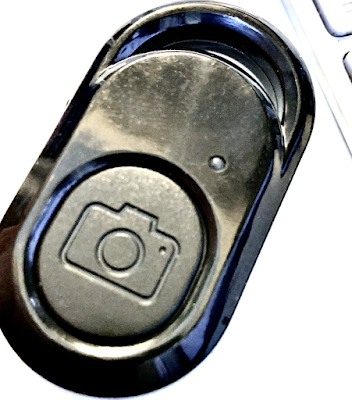Every time one is forced to touch the mobile phone's touch screen, as in taking a photo, vibrations are introduced into the telescope system along with being open to touch pad errors.
In the case of videos over photos, two jarring taps are needed instead of one. The first to start the video and the second to stop the video.
Photos will blur due to motion. Fingers may be too dry and not register the tapping, tapping may need to be repeated, and tapping for exposure is a problem. Moisture in the air may create touch screen failures and anomalies.
Photos will blur due to motion. Fingers may be too dry and not register the tapping, tapping may need to be repeated, and tapping for exposure is a problem. Moisture in the air may create touch screen failures and anomalies.
The idea is to use a wireless bluetooth operated mobile phone camera remote control for the shutter. This will not introduce vibrations and taking a photo does not require tapping on the touchscreen. The device is so small, it can be worn on a necklace strap or bracelet so as not to become lost and also to remain handy for quick use.
If you have an older phone and a newer phone, two different remote shutters may be needed, one for each phone based on the differences in bluetooth frequencies or the changing technology standards and the phone's programming differences. These devices are not expensive and generally cost between five and ten dollars.The remote shutter uses one button battery, CR2032, and it's a good idea to keep a few spares on hand. The range of the Bluetooth® connection is approximately 30 feet (10 meters). However, maximum communication range will vary depending on obstacles (person, metal, wall, etc.) or the electromagnetic environment.

